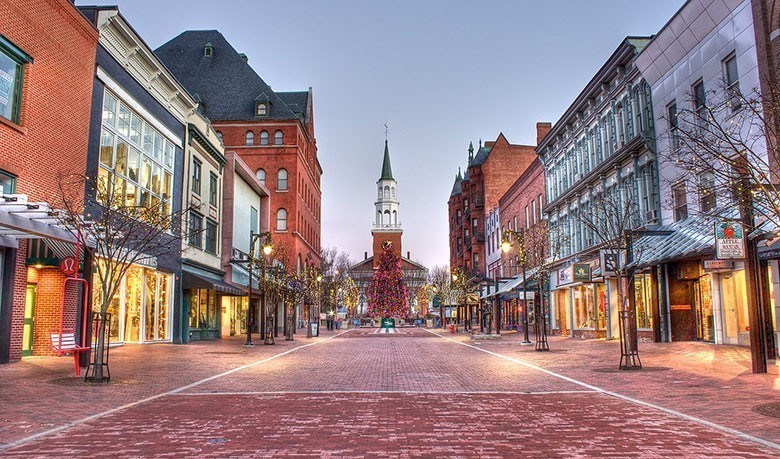(blog à finir et à corriger)
Alors, là, je vous le donne dans le mille, le Qatar est en colère contre l'Egypte qui a bombardé ses petits protégés de daech en Libye.
Peut-être que sarkozy et hollande en France vont nous expliquer leur relation privilégié avec cet état, surtout, si, l'on considère que daech veut utiliser la Libye comme plate-forme pour envoyer des commandos marins suicides sur l'Europe en relation avec des cellules dormantes sur place, donc, l'Italie en premier lieu et peut-être camouflés en réfugiés.
A moins, qu'ils continuent à dire que le Qatar ne finance pas le terrorisme islamique, malgré un gros porteur quatari qui décolle à Tombouctou avant l'arrivée de l'armée française, un gros porteur quatari trouvé par l'armée camerounaise lors de son offensive contre boko haram et son financement et armement de daech en Libye alors que ce pays nie financer et armer daech en Irak et en Syrie.
Il faudrait peut-être arrêter que nos dirigeants soient "sous influence" de ce pays !
(source : Agence Info Libre)

Dessin piqué sur les Moutons Enragés.
Et, quand les citoyens américains sont un exemple à suivre et non pas l'américan way of life qui signifie, "ferme ta gueule pendant que je baise ta femme", proverbe ayant cours à la FED.
(source : Monsieur Mondialisation)
Et, comment se porte la famille clinton dont la mama va se présenter au prochaine présidentielle US ?
(Histoireetsociete)

Hillary, Chelsea and Bill Clinton attend the Clinton Global Initiative in New York in September 2013. (AFP/AFP/Getty Images)

bbb
Alors, là, je vous le donne dans le mille, le Qatar est en colère contre l'Egypte qui a bombardé ses petits protégés de daech en Libye.
Peut-être que sarkozy et hollande en France vont nous expliquer leur relation privilégié avec cet état, surtout, si, l'on considère que daech veut utiliser la Libye comme plate-forme pour envoyer des commandos marins suicides sur l'Europe en relation avec des cellules dormantes sur place, donc, l'Italie en premier lieu et peut-être camouflés en réfugiés.
A moins, qu'ils continuent à dire que le Qatar ne finance pas le terrorisme islamique, malgré un gros porteur quatari qui décolle à Tombouctou avant l'arrivée de l'armée française, un gros porteur quatari trouvé par l'armée camerounaise lors de son offensive contre boko haram et son financement et armement de daech en Libye alors que ce pays nie financer et armer daech en Irak et en Syrie.
Il faudrait peut-être arrêter que nos dirigeants soient "sous influence" de ce pays !
(source : Agence Info Libre)
Le torchon brûle entre Le Caire et Doha après les frappes égyptiennes en Libye
Source : Opex360

Quelques heures après la diffusion d’une vidéo montrant la décapitation de 21 coptes égyptiens par l’État islamique (EI) sur une plage libyenne, l’Égypte a bombardé la ville de Derna, connue pour être un bastion jihadiste, en représailles et a ensuite demandé une intervention miliaire internationale en Libye.
Seulement, le Qatar, qui soutient la milice islamiste Fajr Libya ainsi que le gouvernement « révolutionnaire » libyen, qui, installé à Tripoli, refuse d’admettre ou du moins minimise la présence de l’EI en Libye, a émis des réserves sur la réaction égyptienne, lors d’une réunion de la Ligue arabe. Pour Doha, Le Caire aurait dû consulter « avant toute action militaire unilatérale contre un autre Etat membre » de l’organisation.
La réponse du délégué égyptien, Tarek Adel, a été immédiate : « En émettant des réserves sur un projet de résolution arabe soutenant le droit de l’Egypte à la légitime autodéfense et à mener des raids contre des organisations terroristes, le Qatar a révélé son soutien au terrorisme », a-t-il affirmé.
Pour protester contre cette mise en cause, le Qatar a rappelé son ambassadeur en Égypte pour « consultations ». Les relations entre les deux pays étaient déjà tendues, notamment en raison de la destitution, en 2013, du président égyptien Mohamed Morsi, issu des Frères musulmans, soutenus par Doha, et de la répression de ses sympathisants qui a suivi.
Lire la suite sur Opex360 »
En attendant, les USA vont entraîner les militants de l'armée libre syrienne, les modérés, laïcs de l'histoire. Ils vont en former et armer plusieurs milliers par an.
Bien, sauf que l'armée libre n'existe pratiquement plus, que ses militants ont rejoint les mouvements djihadistes ou leur vendent leurs armes ou les laissent piller leur stock.
Les américains savent très bien que ce sont des islamistes qu'ils vont entraîner et choisir le Qatar comme lieu d'entraînement est simplement l'avouer sans le dire.
La Turquie veut que ces gens combattent, et, les djihadistes et l'armée d'Assad. Eh, ils vont former des super men. Comme, si, le Qatar allait, sur son territoire, laisser s'entrainer des individus qui sont destinés à combattre les mouvements djihadistes qu'il finance.
Disons, que le Pentagone organise la guerre civile pour qu'elle dure des années, des années, au moins 15 ans. Et, pendant, ce temps-là, les syriens iront faire les boat people direction l'Europe et non les Etats-Unis qui continuent à verser de l'huile sur le feu.
L'Europe va être submerger sous le poids des réfugiés qu'elle a à cause de son soutien de la position va-t-en guerre des Etats-Unis.
Partout où les States sont intervenus, c'est d'abord en bombardant à tout va. L'Europe ferait bien de revenir à la diplomatie, plutôt qu'à recourir à la guerre en servant d'alibi pour se passer de l'autorisation de l'ONU.
Oui, les gouvernements européens sont devenus des pantins, c'est bien pour cela qu'ils nous vendent aux affairistes américains à travers la zone de libre échange transatlantique.
(source : RTBF.be)
En attendant, les USA vont entraîner les militants de l'armée libre syrienne, les modérés, laïcs de l'histoire. Ils vont en former et armer plusieurs milliers par an.
Bien, sauf que l'armée libre n'existe pratiquement plus, que ses militants ont rejoint les mouvements djihadistes ou leur vendent leurs armes ou les laissent piller leur stock.
Les américains savent très bien que ce sont des islamistes qu'ils vont entraîner et choisir le Qatar comme lieu d'entraînement est simplement l'avouer sans le dire.
La Turquie veut que ces gens combattent, et, les djihadistes et l'armée d'Assad. Eh, ils vont former des super men. Comme, si, le Qatar allait, sur son territoire, laisser s'entrainer des individus qui sont destinés à combattre les mouvements djihadistes qu'il finance.
Disons, que le Pentagone organise la guerre civile pour qu'elle dure des années, des années, au moins 15 ans. Et, pendant, ce temps-là, les syriens iront faire les boat people direction l'Europe et non les Etats-Unis qui continuent à verser de l'huile sur le feu.
L'Europe va être submerger sous le poids des réfugiés qu'elle a à cause de son soutien de la position va-t-en guerre des Etats-Unis.
Partout où les States sont intervenus, c'est d'abord en bombardant à tout va. L'Europe ferait bien de revenir à la diplomatie, plutôt qu'à recourir à la guerre en servant d'alibi pour se passer de l'autorisation de l'ONU.
Oui, les gouvernements européens sont devenus des pantins, c'est bien pour cela qu'ils nous vendent aux affairistes américains à travers la zone de libre échange transatlantique.
(source : RTBF.be)
Signature de l'accord USA-Turquie pour former et équiper les rebelles syriens
MONDE | Mis à jour le jeudi 19 février 2015 à 21h34
Charlie Hebdo: 19 victimes, 3 millions de Charlie dans la rue
Loi Macron: 67 millions de victimes et personne dans la rue
Cherchez l’erreur…
Ne vous leurrez pas, la loi Macron est une mise en place en France du TAFTA, nous en subirons tous les conséquences et le seul moyen d’arrêter la finance est de la combattre avec ses propres armes, en retirant notre argent massivement!
Et, quand les citoyens américains sont un exemple à suivre et non pas l'américan way of life qui signifie, "ferme ta gueule pendant que je baise ta femme", proverbe ayant cours à la FED.
(source : Monsieur Mondialisation)
Cette ville américaine tourne à 100% d’énergie renouvelable




La ville de Burlington, dans l’état du Vermont, est la première ville des États-Unis à fonctionner entièrement avec des énergies renouvelables. Une petite révolution locale dans un pays au bilan carbone particulièrement élevé.
Un paradoxe démocratique
C’est le grand paradoxe des États-Unis, pays autant critiqué qu’admiré, les états et les villes conservent une marge décisionnelle importante dans les choix politiques. Résultat, on observe des politiques locales diamétralement opposées en fonction des régions. Pas d’exception en matière d’écologie. Alors que le pays dans son ensemble est responsable d’un impact important sur le bilan écologique global, certaines villes prennent la tangente et deviennent des symboles de changement. C’est ainsi le cas de Burlington, la plus grande ville de son état (+-40 000 habitants) qui se distingue depuis 2015 par une alimentation énergétique 100% verte.
« Le changement climatique est le plus grand problème que nous devons affronter, peut-être même le plus gros problème jamais connu. » estime Taylor Ricketts, professeur en sciences de l’environnement de l’Université du Vermont, dans un journal local. « Mais il n’y a pas de solution magique pour régler ça. Cela va demander des millions de solutions uniques venant d’un peu partout. Et Burlington en est une, pas vrai ? »

Action en amont et en aval
En réalité, cet objectif est le fruit de nombreuses années de travail. La ville côtière, noyée dans la nature avoisinante, s’était donné pour objectif de produire une énergie la plus locale et propre possible. Objectif atteint très récemment. Son secret ? Démultiplier les sources d’énergies alternatives et réduire la consommation. 50% de son énergie est assurée par des générateurs hydrauliques. Vient ensuite une station utilisant la biomasse pour produire 30% de la demande avec la possibilité de s’adapter à d’autres sources en cas de pénurie. La centrale s’alimente principalement en « déchets bois » de la région. Enfin, les éoliennes et les panneaux solaires complètent les 20% restants d’électricité nécessaire aux besoin des 40 000 habitants.
Seule la centrale à biomasse peut émettre par intermittence du CO2 dans l’atmosphère. Mais celle-ci est équipée de filtres haute technologie qui permettent à la station de n’émettre pratiquement aucune particule polluante, si on en croit les affirmations des responsables.

Ces solutions durables ne suffisent pourtant pas à Burlington pour se prétendre 100% durable. Parallèlement, la ville applique une politique de réduction drastique de la consommation d’énergie par tous les moyens existants. Une politique qui semble efficace si on en croit les chiffres. La ville consommerait moins d’électricité en 2015 qu’en 1989 ! Retour en arrière ? Pas vraiment, la qualité de vie étant similaire, voire même supérieure. Le projet aurait même créé beaucoup d’activité dans la région.
Une vision à long terme
Ce programme avant-gardiste a débuté très tôt, dès les premières alarmes climatiques. Déjà en 1990, la population va approuver l’investissement de 11.3 millions de dollars dans un programme d’énergie durable jusqu’en 2002. Chaque habitant participe à l’évolution avec une légère taxe locale (Energy Efficiency Charge). Bilan : des factures d’électricité moins importantes, un air parfaitement clair, des rivières sauvegardées et une belle publicité pour la ville côtière.

En plus d’être bon pour l’environnement de la région, c’est également bon pour les recettes de la ville. En effet, le coût de l’énergie devrait être en nette augmentation dans les années à venir. Les responsables estiment économiser 20 millions de dollars d’ici les prochaines années en produisant leur énergie localement. Leur logique politique de long terme semble se préoccuper de la situation laissée aux prochaines générations.

Source : vermont.org / ecowatch / Go100%.org
Et, comment se porte la famille clinton dont la mama va se présenter au prochaine présidentielle US ?
(Histoireetsociete)
Clintons’ foundation has raised nearly $2 billion — and some key questions

Hillary, Chelsea and Bill Clinton attend the Clinton Global Initiative in New York in September 2013. (AFP/AFP/Getty Images)
Since its creation in 2001, the Bill, Hillary and Chelsea Clinton Foundation has raised close to $2 billion from a vast global network that includes corporate titans, political donors, foreign governments and other wealthy interests, according to a Washington Post review of public records and newly released contribution data.
The total, representing cash and pledges reported in tax filings, includes $262 million that was raised in 2013 — the year Hillary Rodham Clinton stepped down as secretary of state and began to devote her energies to the foundation and to a likely second run for president.
The financial success of the foundation, which funds charitable work around the world, underscores the highly unusual nature of another Clinton candidacy. The organization has given contributors entree, outside the traditional political arena, to a possible president. Foreign donors and countries that are likely to have interests before a potential Clinton administration — and yet are ineligible to give to U.S. political campaigns — have affirmed their support for the family’s work through the charitable giving.
The Post review of foundation data, updated this month on the group’s Web site to reflect giving through 2014, found substantial overlap between the Clinton political machinery and the foundation.
Nearly half of the major donors who are backing Ready for Hillary, a group promoting her 2016 presidential bid, as well as nearly half of the bundlers from her 2008 campaign, have given at least $10,000 to the foundation, either on their own or through foundations or companies they run.
The Clintons have relied heavily on their close ties to Wall Street, with donations from the financial services sector representing the largest share of corporate donors.
And many of the foundation’s biggest donors are foreigners who are legally barred from giving to U.S. political candidates. A third of foundation donors who have given more than $1 million are foreign governments or other entities based outside the United States, and foreign donors make up more than half of those who have given more than $5 million.
The prevalence of financial institutions, both foreign and domestic, as major donors is likely to stir more unease in the Democratic Party’s liberal base, which is pushing Hillary Clinton to adopt a more populist and less Wall Street-focused economic agenda. The role of interests located in countries such as Saudi Arabia, Qatar and Argentina may spur questions about the independence of a potential commander in chief who has solicited money from foreign donors with a stake in the actions of the U.S. government.
‘A philanthropy, period’
Foundation officials said the organization’s fundraising success reflects its track record of accomplishment. They said many other foundations have a similar international donor base.
“The Clinton Foundation is a philanthropy, period,” said Craig Minassian, the group’s chief communications officer. “We take pride in our programs, our efficiency, and our transparency. As with other global charities, the Clinton Foundation receives the support of individuals, organizations and governments from all over the world because our programs are improving the lives of millions.”
Minassian said it was a “false choice to suggest that people who may be interested in supporting political causes wouldn’t also support philanthropic work.”
Nick Merrill, a spokesman for Hillary Clinton, declined to comment.
The foundation, which Bill Clinton created soon after leaving the White House in 2001, has become one of the world’s fastest-growing philanthropies.
It consists of multiple charitable initiatives that deal with climate change, HIV drug access and economic development in poor areas. One program, led by Hillary and Chelsea Clinton, seeks to improve the lives of women and girls.
The foundation has won accolades from philanthropy experts and has drawn bipartisan support, with members of the George W. Bush administration often participating in its programs. Major donations have come from figures such as Christopher Ruddy, the chief executive of the conservative Web site Newsmax.com and a onetime critic of Bill Clinton.
Foundation tax records show that it reported raising $1.69 billion in cash and pledges between 2001 and 2013, the last year for which documents are available. As of the end of 2014, donations reached nearly $2 billion, foundation officials confirmed.
The scope of the foundation’s finances show the unparalleled fundraising power of one of the world’s most important political brands.
“To be raising $250 million a year, certainly puts them in the top ranks of U.S. nonprofits in terms of fundraising,” said Steven Lawrence, director of research for the Foundation Center, which studies philanthropy.
Lawrence said the Clintons’ ability to draw support from overseas — a coveted goal for many U.S. charities and university endowments — was especially unusual.
“It’s all about building networks and connections,” Lawrence said, adding that donors are likely attracted both personally to the Clintons and to the highly regarded philanthropic work of their foundation.
The donor list shows that the foundation has relied most heavily on seven donors that have each given more than $25 million, including a foundation established by a Canadian mining magnate, Frank Giustra; the national lottery of Holland; and Chicago-based Democratic donor Fred Eychaner.
Other major donors giving at lower levels run the gamut of industries and interests, such as the investment banking firm Goldman Sachs, beverage giant Coca-Cola, and the governments of Oman, Kuwait and the United Arab Emirates.
Foundation officials say some of their public support comes from competitive grants that are also available to other charities.
Concerns in late 2008
The foundation’s fundraising sparked concerns in late 2008 when President-elect Barack Obama was preparing to nominate Hillary Clinton to be secretary of state. Some Republicans, raising the prospect of conflicts of interest, criticized the fact that the foundation’s donors were kept secret.
The Clintons struck a deal with the Obama administration to begin posting lists of its contributors online and to accept some restrictions on support from foreign governments.
As part of the deal, the Clinton Global Initiative, which brings together world leaders, industries and charities to discuss global issues, was split from the foundation during Hillary Clinton’s tenure at the State Department. In 2013, after she stepped down as secretary of state, the foundation and the global initiative were reintegrated. The newly published donor list is the first to provide a public accounting of the cumulative giving to both groups.
In posting its donor data, the foundation goes beyond legal requirements, and experts say its transparency level exceeds that of most philanthropies.
But that transparency has limits. The foundation identifies its donors within broad ranges — $1 million to $5 million and greater than $25 million, for instance. And the foundation tallies the giving of each donor only cumulatively, making it difficult to track trends in giving over time.
As a result, it is not possible to determine how much particular donors contributed in the months since Hillary Clinton joined the foundation in 2013.
Still, the organization has stepped up its solicitation efforts in anticipation of soon losing one of its chief fundraisers to the campaign trail — building a $250 million endowment designed to provide some long-term stability.
The recent efforts have at times looked like a political campaign. A contest offered foundation donors the chance to win a free trip to New York to attend a Clinton gala and have a photo taken with the former first couple.
Hillary and Chelsea Clinton hosted a “Millennium Network” event in 2013 aimed at cultivating a younger generation of philanthropists. According to an invitation, there were six tiers of donations, ranging from $150 for individuals to $15,000 for a couple seeking a photograph with Hillary Clinton.
The Post review found that the foundation provided another way for the Clintons’ longtime political donors to support the family’s endeavors between election campaigns. The analysis relied on a list of bundlers compiled by the advocacy group Public Citizen using campaign disclosures and news reports. Each donor had generally raised at least $100,000 for her 2008 campaign.
Susie Tompkins Buell, for instance, a close Clinton friend and 2008 fundraiser who has given to Ready for Hillary, has donated as much as $10 million to the foundation from her charitable fund.
Haim Saban, the billionaire creator of the Mighty Morphin Power Rangers and one of the Clintons’ most-prolific political givers, has donated as much as $25 million to the foundation.
Buell and Saban did not respond to requests for comment.
The overlap between the Clintons’ political network and their charitable work was apparent Friday, when Dennis Cheng stepped down as the foundation’s chief development officer ahead of his expected role as a key fundraiser for Hillary Clinton’s 2016 campaign.
U.S.-regulated donors
Some major foundation donors are corporations that are regulated by the U.S. government.
Tenet, a health-care giant that has been investigated in the past for overbilling Medicare, has given $1.75 million to the Clinton Foundation since 2012 to fund local health programs, such as one promoting more HIV testing in the Palm Springs, Calif., area, where the company has a major hospital.
“We really believe in their health-care model — the community-based model,” said Daniel Waldmann, Tenet’s senior vice president for public affairs.
The newly updated foundation donor list shows that, despite the restrictions on foreign-government support imposed during Hillary Clinton’s tenure as secretary of state, the foundation continued to rely heavily on non-U.S. sources. The Wall Street Journal reported Wednesday that the foundation has now lifted the foreign-government restrictions.
The data shows that some major donors represent international interests that have faced scrutiny from the U.S. government.
All three Clintons, for instance, have attended meetings and private events with Victor Pinchuk, a Ukrainian steel magnate who has faced formal complaints in the United States for unfair trade practices. Spokesmen for the Clintons and Pinchuk waved away any suggestion of a conflict between the donor’s regulatory concerns and the charitable contributions to the foundation.
“No assistance with any business issues has now or ever been sought from the Clinton Foundation or its principals,” said Thomas Weihe, a spokesman for the Kiev-based Pinchuk Foundation.
He said Pinchuk supported the Clinton effort because of the foundation’s record and the “unique capacity of its principals to promote the modernization of Ukraine.”
Rosalind Helderman is a political enterprise and investigations reporter for the Washington Post.
Tom Hamburger covers the intersection of money and politics for The Washington Post.

Steven Rich is the database editor for investigations at The Washington Post. While at The Post, he’s worked on investigations involving tax liens, civil forfeiture, cartels and government oversight. He was also a member of the reporting team awarded the Pulitzer for NSA revelations. PGP Fingerprint: 69FA 5730 ADDD 5488 24FE 6EB2 B727 D930
bbb
 19 février 2015
19 février 2015


